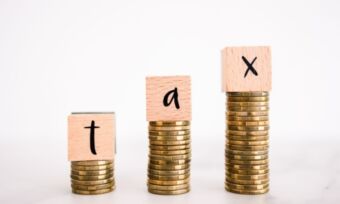How to find lost super
Here’s a list of steps you could consider to help you find and recover any lost super you may have.

Here’s a list of steps you could consider to help you find and recover any lost super you may have.
What is lost superannuation?
If you’ve ever switched jobs, lived overseas, or changed your name or address during your working life, you may have lost track of some of your superannuation along the way. According to the Australian Tax Office (ATO), your super fund will report you as a ‘lost member’ if any of the following situations apply:
- They have not been able to contact you.
- They have not received any contributions or rollover amounts for you in the past five years.
- Your account was transferred from another fund as a lost member account and no new address has been found.
The ATO stresses that it is technically super members who can become ‘lost’ under Australia’s super laws, not their accounts or the money in them. This means that if a member confirms their address or tells the fund they want to continue being a member, then they generally wouldn’t be considered lost, even if they’re no longer paying money into the account. This also excludes self-managed super fund (SMSF) members from being considered lost.
The money in a lost member’s super account is generally held by their super fund until they claim it, unless it totals less than $6,000. In that case, the fund typically must pay the balance of these ‘small lost member accounts’ to the ATO instead, and the money is considered ‘unclaimed’ rather than lost. There are also a range of other conditions under which the fund would transfer super to the ATO.
What is unclaimed superannuation?
Unclaimed super is different to lost super in that the person it belongs to isn’t necessarily inactive or uncontactable, and that it sits with the ATO rather than with individual super funds. Super funds generally have to report and pay unclaimed super money to the ATO twice a year. The ATO then adds the money to its Unclaimed Super Money (USM) register, and holds onto it until its owner claims it.
According to the Association of Super Funds of Australia’s Super Guru website, unclaimed super can include super belonging to:
- members aged over 65
- non-member spouses (where a person’s super has been split following breakdown of their marriage or de facto relationship).
- deceased members
- former temporary residents
- lost members with ‘small’ account balances of less than $6,000
- lost members with ‘insoluble’ accounts, meaning their super fund didn’t have enough information about them to verify they were entitled to the money.
The good news is that unclaimed and lost super is still considered to be owned by the member it belongs to, and it may be easier than you think to claim it. On the other hand, consolidating your super can mean you avoid paying multiple sets of fees and insurance premiums, but if your lost super is still tied to a super fund and has insurance associated with it, you may want to consider whether you still need this insurance. You can compare Life Insurance through Super on Canstar’s database.
How does super get lost or go unclaimed?
Some examples of why super becomes ‘lost’ and goes unclaimed, include:
You’ve changed jobs before 2021: Rules introduced in 2021 mean that your active super fund is ‘stapled’ to you, and a new employer must pay super into that account. However, if you changed jobs before 2021, you needed to tell your employer what super fund you wanted to be in, or if you wanted to go with the employer’s default fund. The ‘stapled super‘ rules are designed to prevent people from having multiple super accounts, thereby decreasing the risk of losing track of super.
Your super fund can’t find you: You may not have updated your contact details with your super fund (or funds) when you moved house or changed your name.
 Online rollover
Online rollover
 Online application
Online application
 Online rollover
Online rollover
 Online application
Online application
 Online rollover
Online rollover
 Online application
Online application
 Online rollover
Online rollover
 Online application
Online application
 Online rollover
Online rollover
 Online application
Online application
Canstar may earn a fee for referrals from its website tables and from Promotion or Sponsorship of certain products. Fees payable by product providers for referrals and Sponsorship or Promotion may vary between providers, website position, and revenue model. Sponsorship or Promotion fees may be higher than referral fees.
On our ratings results, comparison tables and some other advertising, we may provide links to third party websites. The primary purpose of these links is to help consumers continue their journey from the ‘research phase’ to the ‘purchasing’ phase. If customers purchase a product after clicking a certain link, Canstar may be paid a commission or fee by the referral partner. Where products are displayed in a comparison table, the display order is not influenced by commercial arrangements and the display sort order is disclosed at the top of the table.
Sponsored or Promoted products are clearly disclosed as such on the website page. They may appear in a number of areas of the website, such as in comparison tables, on hub pages, and in articles. The table position of the Sponsored or Promoted product does not indicate any ranking or rating by Canstar.
Sponsored or Promoted products table
- Sponsored or promoted products that are in a table separate to the comparison tables in this article are displayed from lowest to highest annual cost.
- Performance figures shown for Sponsored or Promoted products reflect net investment performance, i.e. net of investment tax, investment management fees and the applicable administration fees based on an account balance of $50,000. To learn more about performance information, click here.
- Please note that all information about performance returns is historical. Past performance should not be relied upon as an indicator of future performance; unit prices and the value of your investment may fall as well as rise.
How do I find lost or unclaimed superannuation?
The Australian Taxation Office (ATO) and the federal government’s Moneysmart website, outline four main ways you do a lost super search on unclaimed superannuation that may belong to you. Whichever method of finding your super you choose, if you decide to recover it you can choose whether to consolidate it into another active account, or withdraw it if you have met a condition of release.
1. Ask your super fund to search for you
If you have a preferred super fund, you can request that it searches for lost super on your behalf. Typically, this would involve logging in to your super fund’s online portal and searching for information on ‘consolidating super’, and following the steps. You may have to verify your identity and provide consent, to find your lost super with your Tax File Number as part of the search.
However, it’s important to find out if the fund automatically puts the super amounts they find into your active account (ie: consolidates your super). You may want to check out the performance, fees and other features of the other super funds, to see how they compare to your active super fund, before you decide to consolidate. If you think this could be the case, it might be wise to investigate other ways of finding your super, and then working out a plan to consolidate it.
2. Searching online via myGov
If you have a myGov account linked to the ATO, the ATO says you can log into it and click ‘Manage my super’ to search for lost super money. If you have your tax file number (TFN) ready, you can also use this ‘Manage my super’ function in myGov to search the ATO’s USM register for any unclaimed super it may be holding for you. The ATO provides more details on how myGov’s online services work, along with instructions on setting up a myGov account if you don’t have one already.
3. Calling the lost super search line
Another option to track down your lost or unclaimed super is to call the ATO’s automated ‘lost super search line’ on 13 28 65. If you do so, you will need to be ready to provide some or all of the following personal information on request:
- Your personal details: tax file number (TFN), name, date of birth.
- Your contact details: current postal address, phone number, email address.
- Your super fund details: (any super fund where contributions may have been made on your behalf) super fund name, account number, beneficiaries, period of contributions.
- Your previous details: name, address, employment.
4. Filling out a paper form
You can download, print and fill out a paper form from the ATO, then mail it back to the tax office. The ATO provides a link to this form on its website, and you can fill it out either on your computer or with a pen. The ATO’s postal address that you will need to send the form to is listed at the base of the form itself.
Compare Superannuation with Canstar
The table below displays some of the superannuation funds currently available on Canstar’s database for Australians aged 30 to 39 with a super balance of up to $55,000. The results shown are sorted by Star Rating (highest to lowest) and then by 5 year return (highest to lowest). Performance figures shown reflect net investment performance, i.e. net of investment tax, investment management fees and the applicable administration fees based on an account balance of $50,000. To learn more about performance information, click here. Consider the Target Market Determination (TMD) before making a purchase decision. Contact the product issuer directly for a copy of the TMD. Use Canstar’s superannuation comparison selector to view a wider range of super funds. Canstar may earn a fee for referrals.
 Online rollover
Online rollover
 Online application
Online application
 Online rollover
Online rollover
 Online application
Online application
 Online rollover
Online rollover
 Online application
Online application
 Online rollover
Online rollover
 Online application
Online application
- Performance, fee and other information displayed in the table has been updated from time to time since the rating date and may not reflect the products as rated.
- The performance and fee information shown in the table is for the investment option used by Canstar in rating of the superannuation product.
- Performance information shown is for the historical periods up to 31/05/2024 and investment options noted in the table information.
- Performance figures shown reflect net investment performance, i.e. net of investment tax, investment management fees and the applicable administration fees based on an account balance of $50,000. To learn more about performance information, click here.
- Performance data may not be available for some products. This is indicated in the tables by a note referring the user to the product provider, or by no performance information being shown.
- Please note that all information about performance returns is historical. Past performance should not be relied upon as an indicator of future performance; unit prices and the value of your investment may fall as well as rise.
- Any advice on this page is general and has not taken into account your objectives, financial situation or needs. Consider whether this general financial advice is right for your personal circumstances. You may need financial advice from a qualified adviser. Canstar is not providing a recommendation for your individual circumstances. See our Detailed Disclosure.
- Not all superannuation funds in the market are listed, and the list above may not include all features relevant to you. Canstar is not providing a recommendation for your individual circumstances.
- Canstar may earn a fee for referrals from its website tables, and from Sponsorship or Promotion of certain products. Fees payable by product providers for referrals and Sponsorship or Promotion may vary between providers, website position, and revenue model. Sponsorship or Promotion fees may be higher than referral fees. Sponsored or Promotion products are clearly disclosed as such on website pages. They may appear in a number of areas of the website such as in comparison tables, on hub pages and in articles. Sponsored or Promotion products may be displayed in a fixed position in a table, regardless of the product’s rating, price or other attributes. The table position of a Sponsored or Promoted product does not indicate any ranking or rating by Canstar. For more information please see How We Get Paid.
- Click here for additional important notes and liability disclaimer.
Performance and Investment Allocation Differences
- Fee, performance and asset allocation information shown in the table above have been determined according to the investment profile in the Canstar Superannuation Star Ratings methodology.
- Some providers use different age groups for their investment profiles which may result in you being offered or being eligible for a different product to what is displayed in the table. See here for more details.
- Australian Retirement Trust Super Savings’ allocation of funds for investors aged 55-99 differ from Canstar’s methodology – see details here.
- The Australian Retirement Trust Super Savings (formerly Sunsuper for Life) product may appear in the table multiple times. While you will not be offered any single investment option, this is to take into account the different combinations of investment options Australian Retirement Trust may apply to your account based on your age. For more detail in relation to the Australian Retirement Trust (formerly SunSuper for Life) product please refer to the PDS issued by Australian Retirement Trust for this product.
- Investment profiles applied initially may change over time in line with an investor’s age. See the provider’s Product Disclosure Statement and TMD and in particular applicable age groups for more information about how providers determine their investment profiles.
Choosing a superannuation account
Want to consolidate all your lost super but are unsure which fund to choose? You can get an idea of some of the factors to consider by comparing superannuation accounts on our database. It’s worth noting that consolidating super funds is beneficial for many people but isn’t right for everyone, so the pros and cons should be carefully weighed up.
When looking for a suitable fund, there are many factors to consider, such as the fees charged, and whether the insurance offering is suitable for you. Past performance is an important consideration because it gives an indication of what a fund has been capable of delivering in the past through varied market conditions.
However, investments can go up and down, so past performance is not a reliable indicator of future performance.
Cover image source: Viktor1/Shutterstock.com
This article was reviewed by our Editor-in-Chief Nina Rinella before it was updated, as part of our fact-checking process.

Try our Superannuation comparison tool to instantly compare Canstar expert rated options.






